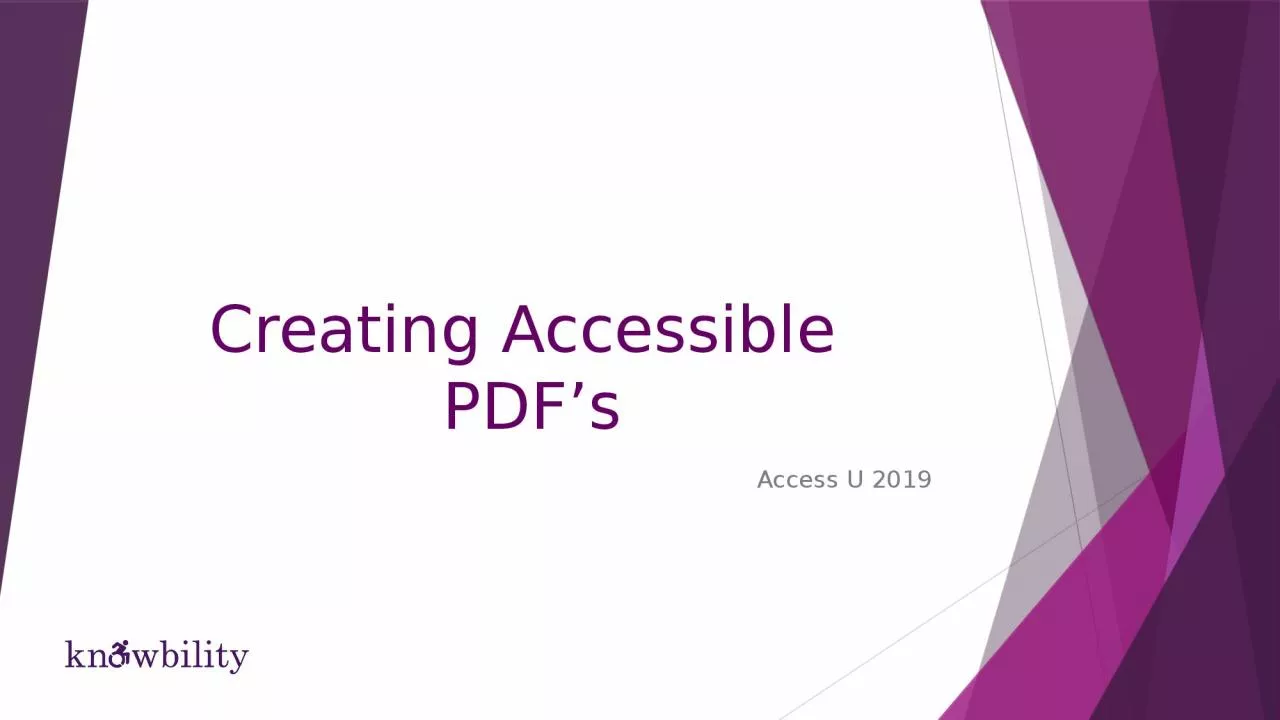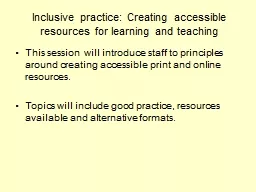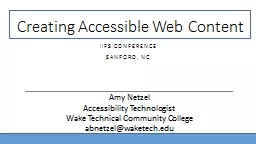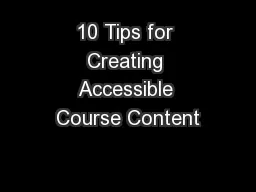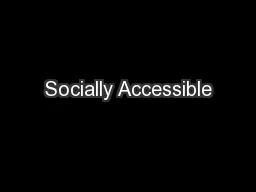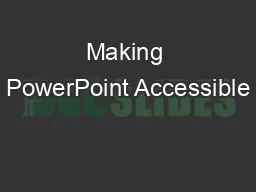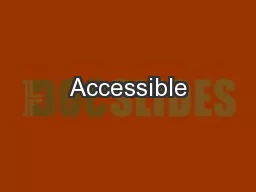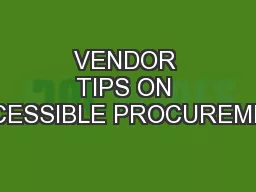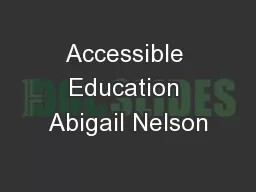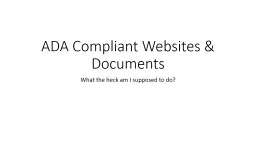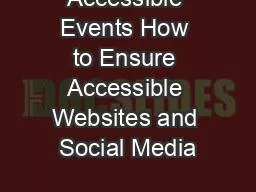PPT-Creating Accessible PDF s
Author : unisoftsm | Published Date : 2020-08-29
Access U 2019 Creating Accessible PDFs Section 508 httpwwwsection508gov WCAG Draft Techniques httpwwww3orgWAIGLWCAG20TECHSpdfhtml What we will cover Language
Presentation Embed Code
Download Presentation
Download Presentation The PPT/PDF document "Creating Accessible PDF s" is the property of its rightful owner. Permission is granted to download and print the materials on this website for personal, non-commercial use only, and to display it on your personal computer provided you do not modify the materials and that you retain all copyright notices contained in the materials. By downloading content from our website, you accept the terms of this agreement.
Creating Accessible PDF s: Transcript
Download Rules Of Document
"Creating Accessible PDF s"The content belongs to its owner. You may download and print it for personal use, without modification, and keep all copyright notices. By downloading, you agree to these terms.
Related Documents

